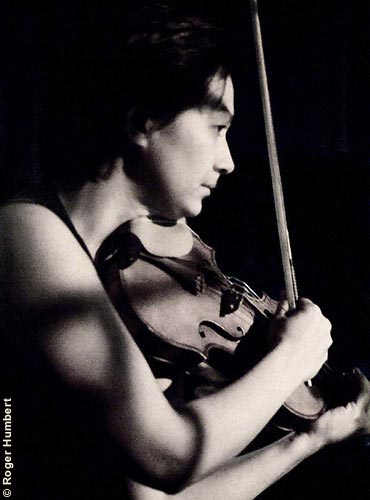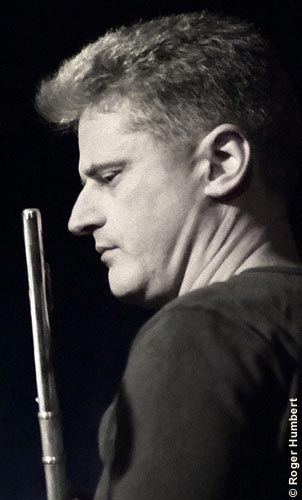 |
| The Tropic of Gryphon Chamber Music from Cuba and Brazil |
|
| January 14, 2005 • Lula Lounge • Toronto |
|
|
|
|
|
|
| Report by Stanley Fefferman with photos by Roger Humbert |
| This is the fourth concert of Classical Fusion presented in recent years by Music Toronto, featuring their Ensemble-in-Residence, the Gryphon Trio. Lula Lounge was packed solid with diners and a standing-room contingent that listened attentively and responded with enthusiasm to the two-hour concert, and stayed on to Salsa the night away. |

Annalee Patipatanakoon |
|
Latin-Classical fusion in a club venue is a bit of what Roman Borys, the Gryphon cellist charactererized, with good humour, as “Music for Chamber Trio and Espresso Machine.” In other words, life goes on while the music is playing, which is a good thing, in this case. Here are some highlights of the evening.
The Gryphon Trio presented the world premier of “Tropic of Gryphon,” written for them by Jovino Santos Neto of Brazil. While phones rang and dining utensils tinkled, Annalee Patipatanakoon drew slow, dark tones from her violin which Roman Borys answered with the voice of his cello. Jamie Parker’s piano joined with a series of dark reflective chords, and gradually picked up the tempo to a dancing mood, aided by the cello plucked pizzicato. The trio seemed to be developing an eight note theme by ever-faster variations, that came to rest: the space brought an untimely outburst of applause from the audience. The Trio moved quickly into a two bar theme adagio, followed by a short staccato passage that moved quickly towards an energetic and abrupt end. Timely applause. Lots.
|
|
|
Jovino Santos Neto joined the Trio with his melodica, Doug Perry brought his viola, and the versatile reedman John Johnson brought his flute for a pair of tunes by the late Antonio Carlos Jobim: “Dindi”, and “Desafinado”. Flute and melodica took the pretty melody of “Dindi’ through a long introduction, and the Gryphon began to weave a thick, rich tapestry of harmonies, providing the simple, lyrical mood of the melody with an astonishing emotional depth. Here is the key point of fusion--the in-the-world liveliness of the Latin and the beyond-this-world profundity of the Classical.
|
|
The program moved by different combinations of personnel up to what Cuban pianist Hilario Duran called “a different kind of chamber music”—an Afro-Cuban chant dedicated to the sea, called “Jemania”. With Roberto Occipinti on bass and Mark Kelso on drums, Maninho Costa on percussion, the piece took off with dazzling complex piano-work, a booming bass, and loud rattle of snares. Rough seas for me, but the audience loved it.
Later the Trio came out with Hilario subbing on piano for Jamie Parker, adding Carol Fujino on violin and Doug Perry on Viola again, for a number which translates to “See it to Believe it.” John Johnson switched to tenor, Hilario played like a bumble bee, and in the larger ensemble the bass and the drums sort of settled into the soundscape, and continued that way through Roberto Occhipinti’s arrangement of a Santos Neto composition in three-four time that sounded a bit like a squeaky locomotive coming to life and taking off.
Another eye-opener was the world premier performance of a piano trio written by Hilario Duran entitled “Chopiniana”, recalling his days as a music student when the Soviet Bloc sent many advisors, music teachers among them, to Cuba. The Gryphon Trio approached it with their trademark “passion and ease,” creating a vigorous but peaceful feeling, a good note on which to end this report of a good evening.
|
|

John Johnson |
|
|
|
|
|
|
|




